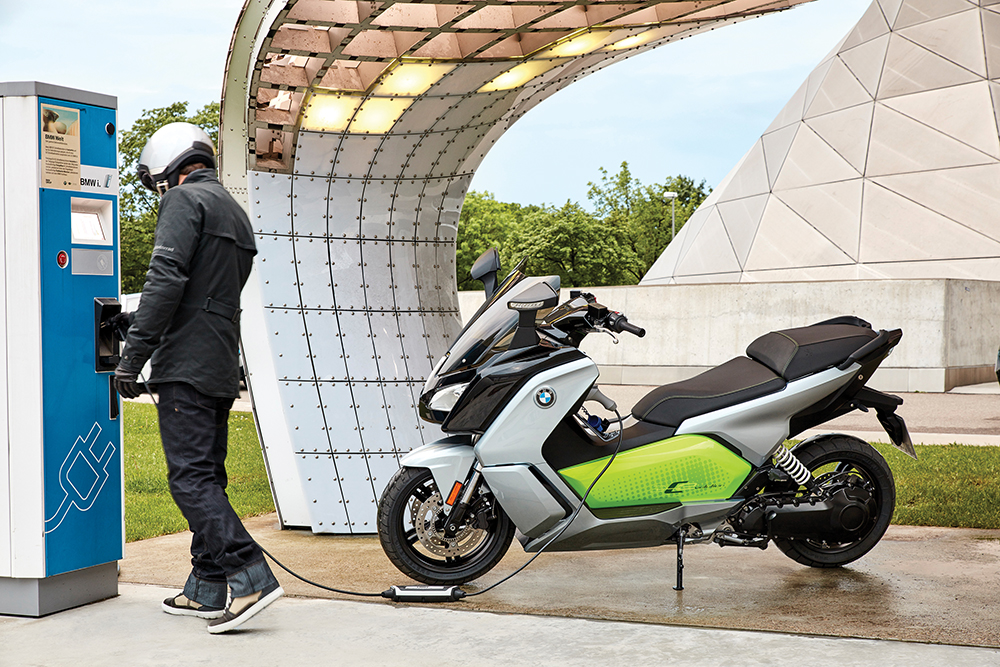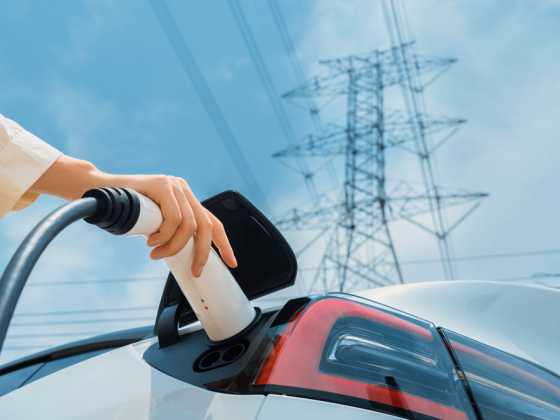Emission-free, two-wheeled mobility

A plug-in grant for electric scooters and motorcycles was announced in October. Stevie Muir from the Motorcycle Industry Association explains how the grants work and how electric two‑wheelers work well in certain fleets.
Over the past few years, electric cars have grabbed the lion’s share of any column inches about EVs and also all of the available grants. However, in October, it was announced that money is to be ring-fenced to make a ‘plug in grant’ available for electric-powered two wheelers (PTWs). Manufacturers with eligible models have been invited to register them with the government’s Office for Low Emission Vehicles (OLEV).
The grant will operate in the same way as for cars, with the grant value being deducted from the price of the vehicle at the point of sale by the dealership. For motorcycles and scooters this means the price of a qualifying vehicle will be reduced by £1,500 or 20 per cent of the total purchase cost (screen price), whichever is the smaller number. This is particularly good news for fleet operators, who can combine the specific benefits of using PTWs with a reduction in emissions, saving time and money. Indeed, many businesses are waking up to this, as insurance data shows quotes for business use for PTWs is up 11 per cent so far this year.
Charging
One of the little known advantages of electric PTWs over electric cars is that they can be charged anywhere. You don’t need to fit special infrastructure into your businesses premises, or into staff homes. They can be plugged into ordinary sockets, and being lighter than cars, tend to charge up much quicker.
“From flat to fully charged takes three hours, and a charge of 80 per cent can be achieved after just two hours and 15 minutes,” explained Scott Grimsdall, who is national Marketing and PR Manager for BMW. BMW has been quick off the mark to register its C Evolution electric scooter with OLEV, and is waiting for confirmation that it will be eligible. Next year, BMW will launch a ‘Long Range’ version of the scooter, which should go 160km/100 miles on a single charge.
Operating costs
With ‘fuel’ costing the equivalent of a penny a mile and less moving parts to go wrong than on cars, operating costs look very attractive, especially when you combine these savings with the benefits which apply to all PTWs. For example parking is often cheaper or free and you can usually get much closer to your end destination. “This can add savings of up to £1,200 per vehicle when based on an annual city centre car park season ticket,” explained Andy Pumphry, who looks after fleet vehicles for Yamaha.
“Saving journey time is perhaps the most potent feature of swapping to PTWs for business use,” says Phil Griffin from Artisan scooters. Filtering offers a huge time advantage, unique to motorcycles and scooters and many bus lanes are open to motorcyclists too. “They can easily cut through static queues of traffic, making door to door journeys significantly more efficient than for cars and vans,” he added.
The capacity to filter is the reason why many emergency services use PTWs, from Blood Bikers, who transport vital NHS products between hospitals, to the AA breakdown riders. Police have obviously been long time users of motorcycles and it seems some forces are now looking at switching to electric, since BMW has a scooter currently being evaluated by a UK force. On mainland Europe, police are already embracing the electric revolution. Erik Huisinga, who is European sales manager for Zero Motorcycles says emergency services in several countries have already switched to Zero bikes: “In Europe, we currently have police bikes in use in Belgium, France, Spain and Italy. We are working on deals with the roadside assistance in Holland and ambulance services in various countries.”
Another advantage of two wheels is that they can get into places cars can’t reach, especially the Zero, which has on and off-road capabilities.
“It’s not just the cost and time savings that can be made that make electric bikes more flexible,” added Huisinga, “It’s the way our bikes can be used. They can be ridden in forests, pedestrian zones (for police) and of course low/zero emission areas, which is increasingly important in city centres.” Zero has also applied to be included in the grant and has leasing arrangements in place.
High quality products
Obviously one of the aims of making funds available to subsidise electric motorcycles is to encourage high quality product within the sector. The OLEV website states that for a motorcycle to qualify for the grant scheme, it must meet certain criteria, including a good battery life with a minimum of five years warranty. It must also be at least 50kg in weight (without batteries) and capable of going at least 40 kilometres an hour (25mph).
It must not be converted or modified, but must have gained ‘type approval’ as an electric motorcycle or moped and be registered with the DVLA. Its rider must have a relevant license, along with insurance and needs to comply with the same rules as motorcycles.
Wearing a helmet is of course compulsory and there is a good range of high quality personal protective clothing on the market, using high tech fabrics, as well as traditional leather.
The safety of riders will be foremost in any fleet operator’s mind and recent innovations include personal airbag jackets, which have taken off in the equestrian world and are now gaining popularity for discerning motorcyclists. Motorcycle manufacturers are also looking at vehicle to vehicle technology – to make sure PTWs are part of the ‘connected’ future.
Training
“Ensuring fleet riders are well trained is also key to keeping them safe on the road,” says Karen Cole, safety and training director for the Motorcycle Industry Association. “Finding high quality motorcycle training partners has been made considerably easier recently, with the introduction of a framework to measure and signpost good trainers.”
Karen has been involved in introducing the Motorcycle Industry Accreditation Centre (MCIAC), which only awards its ‘accreditation’ to qualifying training schools. These meet strict criteria, which exceeds DVSA requirements and ‘accreditation’ is maintained through annual inspection and by surveying every single customer who learns with an accredited school.
Transport for London has launched a project to make sure each London borough has an MCIAC ‘accredited’ training school, to help improve access to excellent training, which is useful to know for those operating around the capital.
Northamptonshire County Council has also encouraged its local trainers to become MCIAC accredited as part of the council’s Motorcycle Northants project, which encourages motorcycles as a sustainable transport choice. It is the first council in the UK to actively encourage and facilitate motorcycling in a joined up way, making sure its riders are supported in their transport choice with access to good trainers. As a county which relies heavily on the logistics industry, this is a far sighted plan to encourage a modal shift towards PTWs to keep its road network free from increasing congestion.
Well-being
There is of course an additional benefit in terms of well-being, which is that riders tend to enjoy their journeys far more. A one‑off survey by the Office for National Statistics revealed that those who rode a motorcycle, scooter or moped to work did not experience any negative effect on well‑being, in contrast to those who walked, drove, took the bus or cycled, who all experienced an adverse effect after just 15 minutes.
All these developments help make electric PTWs a smart choice for fleet operators.
“Electric mobility for businesses is here to stay, irrespective of how many wheels are involved,” says Andrew Benfield, group director of Transport at the Energy Saving Trust. “They (PTWs) are a key part of the mobility mix, particularly in cities affected by congestion and air pollution and we look forward to helping organisations understand how these vehicles can work in their fleets.”






